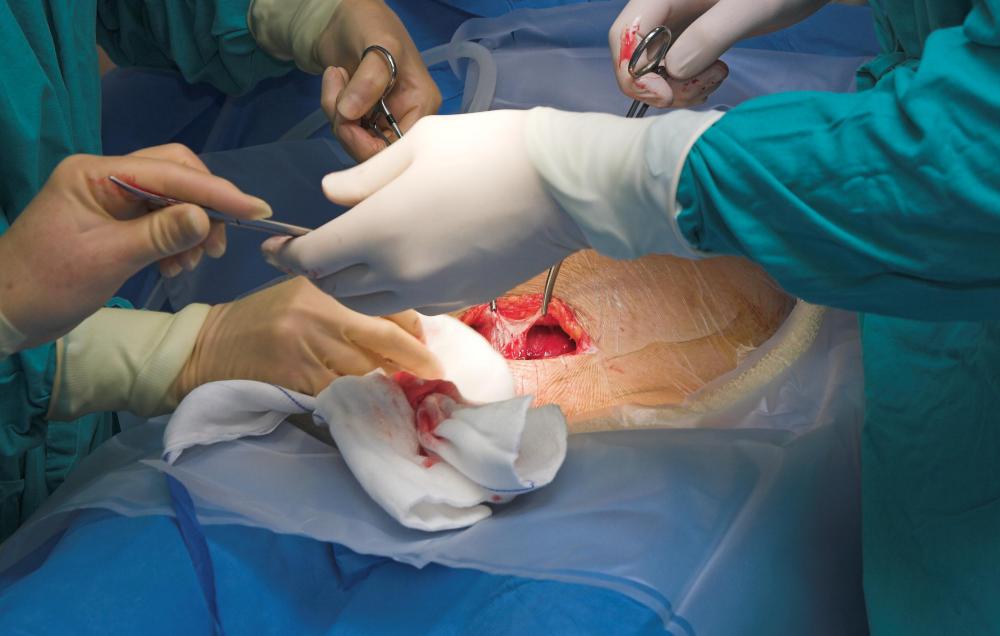At WiseGEEK, we're committed to delivering accurate, trustworthy information. Our expert-authored content is rigorously fact-checked and sourced from credible authorities. Discover how we uphold the highest standards in providing you with reliable knowledge.
What Is the Difference between Fibroid and a Polyp?
If a woman develops abnormal growths in her uterus, she may be suffering from fibroids or polyps. These growths are not the same, despite their common location. The primary differences between a fibroid and a polyp include symptoms, location in the uterus, risk factors for developing the growths, and diagnosis and treatment.
Fibroid symptoms include back pain, pain during sexual intercourse and a general feeling of heaviness or fullness in the lower abdomen. Women who become pregnant while suffering from fibroids are also more likely to develop pregnancy and birth complications, including an increased chance of needing a cesarean section. Infertility, irregular menstrual periods and bleeding from the vagina after going through menopause are among the symptoms of polyps. Both a patient with a fibroid and a polyp sufferer may experience extremely heavy menstrual flow or no symptoms at all. The similarity in some of the symptoms makes proper diagnosis very important.

A fibroid and a polyp may appear in different locations. Growths that appear on the outside of the uterus or inside the uterine wall are most likely fibroids. Either type of growth may be found inside the uterine cavity, often attached to the wall of the uterus by a part resembling a stem. If a woman presents with a uterine growth that extends into the vagina, she generally is suffering from a polyp.

Obese women are more at risk for the development of both a fibroid and a polyp. Fibroid sufferers tend to be African-American women between the ages of 40 and 55, with a family history of the condition. Patients who eat a diet rich in red meat may also be more likely to have fibroids. Women with high blood pressure, as well as those who are prescribed tamoxifen for breast cancer treatment, are at an increased risk of developing polyps. Many patients with polyps also have irregular menstrual periods.

During a typical gynecological examination, a doctor can often detect the presence of growths in the uterus. Further testing can then be performed to distinguish between a fibroid and a polyp. Transvaginal or abdominal ultrasounds, magnetic resonance imaging and closer examination of the uterus via hysteroscopy are some of the diagnostic tests that may be ordered by the physician.

Uterine fibroids and polyps may be treated with medication to alleviate the symptoms, such as pain medications or birth control pills, or drugs designed to shrink the growths. Surgical polyp fibroid removal is often recommended for more severe cases. Women may opt for removal of just the growths if they wish to preserve future fertility. A hysterectomy, or removal of the entire uterus, is another option for patients with especially severe cases as well as those who do not want to have children or are past their childbearing years.
AS FEATURED ON:
AS FEATURED ON:
















Discussion Comments
Thank you for this very well written explanation between a fibroid and a polyp. I recently had an ultrasound done - and the technician told me what I had growing inside my cervix was a "polyp" (it was one of 3 but the largest at 6 cm). I had always been told "it" was a fibroid over the last 30 years - but now due to abnormal bleeding / pain. I'm hoping my gyno either takes the route of hysterectomy (my pref) OR removal of the polyps. Printing up your page for future reference!
Post your comments